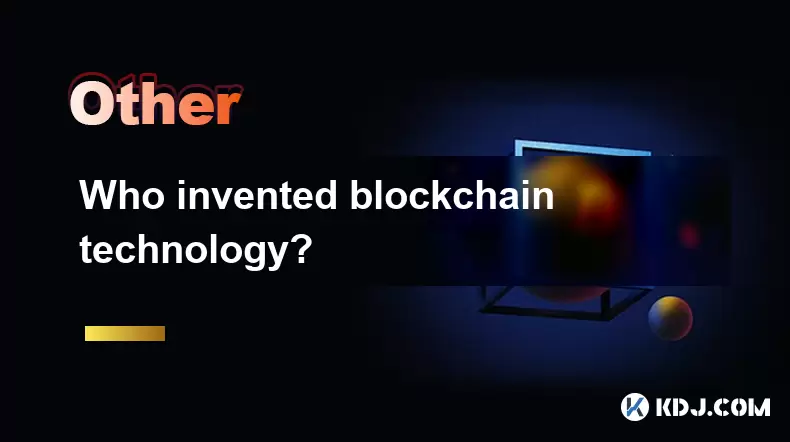-
 Bitcoin
Bitcoin $118300
-0.58% -
 Ethereum
Ethereum $3825
0.11% -
 XRP
XRP $3.137
-0.71% -
 Tether USDt
Tether USDt $0.9999
-0.01% -
 BNB
BNB $803.9
-3.37% -
 Solana
Solana $181.5
-1.94% -
 USDC
USDC $0.9999
0.01% -
 Dogecoin
Dogecoin $0.2238
-2.51% -
 TRON
TRON $0.3358
2.12% -
 Cardano
Cardano $0.7844
-2.16% -
 Hyperliquid
Hyperliquid $43.31
-1.48% -
 Sui
Sui $3.807
-4.04% -
 Stellar
Stellar $0.4203
-1.96% -
 Chainlink
Chainlink $17.79
-3.00% -
 Bitcoin Cash
Bitcoin Cash $567.8
-1.34% -
 Hedera
Hedera $0.2614
-4.30% -
 Avalanche
Avalanche $24.19
-4.46% -
 Litecoin
Litecoin $109.2
-0.74% -
 UNUS SED LEO
UNUS SED LEO $8.969
-0.01% -
 Toncoin
Toncoin $3.404
3.97% -
 Ethena USDe
Ethena USDe $1.001
-0.01% -
 Shiba Inu
Shiba Inu $0.00001307
-3.19% -
 Uniswap
Uniswap $10.33
-1.23% -
 Polkadot
Polkadot $3.884
-4.06% -
 Monero
Monero $312.9
-1.87% -
 Dai
Dai $1.000
0.01% -
 Bitget Token
Bitget Token $4.537
-2.24% -
 Pepe
Pepe $0.00001156
-3.40% -
 Cronos
Cronos $0.1437
-0.89% -
 Aave
Aave $282.8
-2.77%
What is the difference between public chain/alliance chain/private chain? Comprehensive analysis of blockchain types
Public chains like Bitcoin and Ethereum are open and decentralized, while alliance chains like Hyperledger Fabric balance control and scalability, and private chains like Corda offer high privacy and control within a single organization.
May 30, 2025 at 12:42 am

Introduction to Blockchain Types
The world of blockchain technology is diverse, with various types of blockchains designed to meet different needs. Understanding the differences between public chains, alliance chains, and private chains is crucial for anyone looking to navigate the cryptocurrency landscape effectively. Each type of blockchain offers unique features and serves specific purposes, which we will explore in detail.
What is a Public Chain?
A public chain is a decentralized blockchain that is open to everyone. Anyone can participate in the network by validating transactions, mining new blocks, and deploying smart contracts. The most well-known example of a public chain is Bitcoin, which operates on a proof-of-work (PoW) consensus mechanism. Another prominent public chain is Ethereum, which uses a proof-of-stake (PoS) consensus mechanism.
Public chains are characterized by their transparency and security, as the decentralized nature of the network makes it resistant to censorship and single points of failure. However, this openness also comes with challenges, such as scalability issues and higher energy consumption due to the mining process.
What is an Alliance Chain?
An alliance chain, also known as a consortium blockchain, is a type of blockchain that is governed by a group of organizations rather than a single entity. This type of blockchain is often used in industries where multiple parties need to share data and processes securely and efficiently. A notable example of an alliance chain is Hyperledger Fabric, which is used by enterprises for various applications.
Alliance chains strike a balance between the openness of public chains and the control of private chains. They offer improved scalability and privacy compared to public chains, as the participants are known and trusted entities. However, they may not be as decentralized as public chains, which can impact their security and resistance to censorship.
What is a Private Chain?
A private chain is a blockchain that is controlled by a single organization or entity. This type of blockchain is typically used within a company for internal processes, such as supply chain management or record-keeping. An example of a private chain is Corda, which is designed for financial institutions.
Private chains offer the highest level of control and privacy, as the organization can set the rules and access permissions. They are also more scalable than public chains, as the network is not open to the public. However, this control comes at the cost of decentralization, which can make private chains more vulnerable to single points of failure and less resistant to censorship.
Comparing the Three Types of Blockchains
When comparing public chains, alliance chains, and private chains, several key factors come into play:
- Decentralization: Public chains are the most decentralized, followed by alliance chains, and then private chains.
- Security: Public chains are generally considered the most secure due to their decentralized nature, although alliance and private chains can implement robust security measures as well.
- Scalability: Private chains and alliance chains tend to be more scalable than public chains, as they can control the number of participants and optimize performance.
- Privacy: Private chains offer the highest level of privacy, followed by alliance chains, and then public chains, which are fully transparent.
- Consensus Mechanism: Public chains often use PoW or PoS, while alliance and private chains can use more efficient consensus mechanisms tailored to their needs.
Use Cases for Each Type of Blockchain
Each type of blockchain is suited to different use cases based on their unique characteristics:
- Public Chains: Ideal for cryptocurrencies and decentralized applications (dApps) that require high levels of transparency and security. Examples include Bitcoin for peer-to-peer transactions and Ethereum for smart contracts and dApps.
- Alliance Chains: Suitable for industries where multiple organizations need to collaborate securely and efficiently. Use cases include supply chain management, where multiple parties need to track goods and share data, and financial services, where banks can share information securely.
- Private Chains: Best for internal processes within a single organization. Examples include internal record-keeping, where a company needs to maintain secure and immutable records, and supply chain management within a single company, where visibility and control are paramount.
Technical Differences and Implementation
The technical differences between public chains, alliance chains, and private chains also impact their implementation:
- Network Access: Public chains allow anyone to join the network, while alliance chains restrict access to a group of known participants, and private chains limit access to a single organization.
- Node Management: Public chains rely on a large number of nodes to maintain the network, while alliance and private chains can manage nodes more efficiently due to their controlled environments.
- Consensus Mechanisms: Public chains often use resource-intensive consensus mechanisms like PoW to ensure security, while alliance and private chains can use more efficient mechanisms like Practical Byzantine Fault Tolerance (PBFT) or Raft.
- Smart Contracts: Public chains like Ethereum support complex smart contracts, while alliance and private chains may have more limited smart contract capabilities tailored to their specific use cases.
Frequently Asked Questions
Q: Can a public chain be converted into an alliance or private chain?
A: While it is technically possible to fork a public chain and create a new version with restricted access, doing so would fundamentally change the nature of the blockchain. The original public chain would continue to operate as a public chain, while the new version would be considered a separate blockchain.
Q: Are there hybrid models that combine features of public, alliance, and private chains?
A: Yes, there are hybrid blockchain models that attempt to combine the benefits of different types of blockchains. For example, some blockchains allow for private transactions on a public network, or they may have public and private components that interact with each other. However, these hybrid models can be complex to implement and manage.
Q: How do regulatory requirements impact the choice between public, alliance, and private chains?
A: Regulatory requirements can significantly influence the choice of blockchain type. Public chains may face more scrutiny due to their open nature, while alliance and private chains can be designed to comply with specific regulations more easily. For example, financial institutions may prefer alliance or private chains to ensure compliance with data protection and anti-money laundering laws.
Q: Can the same cryptocurrency be used on different types of blockchains?
A: In most cases, a cryptocurrency is designed to operate on a specific blockchain. However, there are some cryptocurrencies that can be used across multiple blockchains through interoperability solutions like cross-chain bridges or atomic swaps. These solutions allow for the transfer of assets between different blockchains, but they require additional infrastructure and can introduce new risks.
Disclaimer:info@kdj.com
The information provided is not trading advice. kdj.com does not assume any responsibility for any investments made based on the information provided in this article. Cryptocurrencies are highly volatile and it is highly recommended that you invest with caution after thorough research!
If you believe that the content used on this website infringes your copyright, please contact us immediately (info@kdj.com) and we will delete it promptly.
- Dalio's Take: Balancing Bitcoin, Gold, and the Debt Doom Loop
- 2025-07-31 00:51:15
- PENGU Price Plunge? Binance Transfers and Token Transfer Trends
- 2025-07-30 23:10:15
- Navigating Crypto Investment: Bitcoin Mining and the Rise of Cloud Mining in the Big Apple
- 2025-07-30 22:31:15
- Meme Coins, Profit, and Investment: Riding the Crypto Wave in Style
- 2025-07-30 23:10:15
- LivLive's Gamified AR Launch Phase: Level Up Your Reality!
- 2025-07-30 22:31:15
- Bitcoin, Crypto, and the Golden Age: Navigating the Future of Digital Assets
- 2025-07-31 00:10:14
Related knowledge

How to start a business using blockchain?
Jul 28,2025 at 12:36am
Understanding the Basics of Blockchain TechnologyBefore diving into the process of starting a business using blockchain, it's crucial to understand wh...

What is a token on the blockchain?
Jul 21,2025 at 07:00am
Understanding the Concept of a TokenIn the realm of blockchain technology, a token is a digital representation of an asset or utility that exists on a...

Can blockchain be used for identity verification?
Jul 18,2025 at 02:14pm
Understanding Identity Verification in the Digital AgeIn the modern digital landscape, identity verification has become a critical component for ensur...

What is a consensus mechanism in blockchain?
Jul 21,2025 at 03:01am
Understanding the Basics of Consensus MechanismsA consensus mechanism is a critical component of any blockchain network. It refers to the process by w...

How to explain blockchain to someone with no tech background?
Jul 18,2025 at 11:08pm
Understanding the Basics of BlockchainTo explain blockchain to someone with no tech background, it's essential to start with simple analogies and avoi...

Who invented blockchain technology?
Jul 23,2025 at 01:28am
Origins of Blockchain TechnologyBlockchain technology did not emerge from a single inventor or institution. Instead, it evolved through a series of ac...

How to start a business using blockchain?
Jul 28,2025 at 12:36am
Understanding the Basics of Blockchain TechnologyBefore diving into the process of starting a business using blockchain, it's crucial to understand wh...

What is a token on the blockchain?
Jul 21,2025 at 07:00am
Understanding the Concept of a TokenIn the realm of blockchain technology, a token is a digital representation of an asset or utility that exists on a...

Can blockchain be used for identity verification?
Jul 18,2025 at 02:14pm
Understanding Identity Verification in the Digital AgeIn the modern digital landscape, identity verification has become a critical component for ensur...

What is a consensus mechanism in blockchain?
Jul 21,2025 at 03:01am
Understanding the Basics of Consensus MechanismsA consensus mechanism is a critical component of any blockchain network. It refers to the process by w...

How to explain blockchain to someone with no tech background?
Jul 18,2025 at 11:08pm
Understanding the Basics of BlockchainTo explain blockchain to someone with no tech background, it's essential to start with simple analogies and avoi...

Who invented blockchain technology?
Jul 23,2025 at 01:28am
Origins of Blockchain TechnologyBlockchain technology did not emerge from a single inventor or institution. Instead, it evolved through a series of ac...
See all articles

























































































